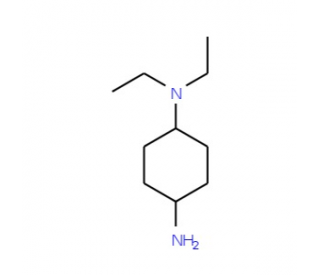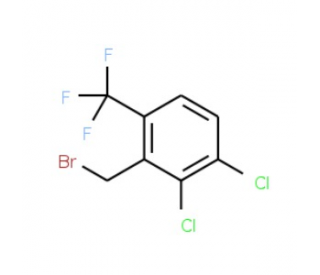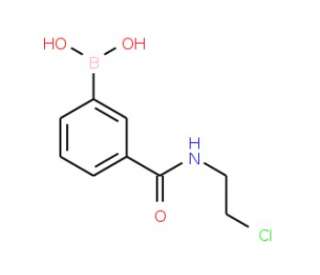详细说明
Species Reactivity
Human
Specificity
Detects human Mcl-1 in direct ELISAs and Western blots.
Source
Polyclonal Sheep IgG
Purification
Antigen Affinity-purified
Immunogen
E. coli-derived recombinant human Mcl-1
Val147-Gly219
Accession # Q07820Formulation
Lyophilized from a 0.2 μm filtered solution in PBS with Trehalose. *Small pack size (SP) is supplied as a 0.2 µm filtered solution in PBS.
Label
Unconjugated
Applications
Recommended
ConcentrationSample
Western Blot
0.5 µg/mL
See below
Please Note: Optimal dilutions should be determined by each laboratory for each application. are available in the Technical Information section on our website.
Data Examples
Western Blot | Detection of Human Mcl‑1 by Western Blot. Western blot shows lysates of Raji human Burkitt's lymphoma cell line and Ramos human Burkitt's lymphoma cell line. PVDF membrane was probed with 0.5 µg/mL of Sheep Anti-Human Mcl‑1 Antigen Affinity-purified Polyclonal Antibody (Catalog # AF8281) followed by HRP-conjugated Anti-Sheep IgG Secondary Antibody (Catalog # ). A specific band was detected for Mcl‑1 at approximately 40 kDa (as indicated). This experiment was conducted under reducing conditions and using . |
Preparation and Storage
Reconstitution
Sterile PBS to a final concentration of 0.2 mg/mL.
Shipping
The product is shipped at ambient temperature. Upon receipt, store it immediately at the temperature recommended below. *Small pack size (SP) is shipped with polar packs. Upon receipt, store it immediately at -20 to -70 °C
Stability & Storage
Use a manual defrost freezer and avoid repeated freeze-thaw cycles.
12 months from date of receipt, -20 to -70 °C as supplied.
1 month, 2 to 8 °C under sterile conditions after reconstitution.
6 months, -20 to -70 °C under sterile conditions after reconstitution.
Background: Mcl-1
MCL-1 (induced Myeloid Cell Leukemia differentiation protein 1; also Bcl2L3 and mcl1/EAT) is a 40-45 kDa member of the Bcl-2 family of proteins. It is widely expressed (in B cells, T cells, neutrophils and fibroblasts) and classified as a prosurvival Bcl-2 family member. Functionally, full-length MCL-1 sequesters the proapoptotic proteins Bak and Bax, rendering them inactive. It also delays cell-cycle progression by interacting with CDK1, CHK1 and PCNA. Human MCL-1 is a likely a 350 amino acid (aa) type II transmembrane protein. It contains a large cytoplasmic region (aa 1-327) plus a very short 2 aa C-terminal luminal segment. The cytoplasmic region has multiple domains, including a PEST (Pro/Glu/Ser/Thr)-like segment (aa 104-175), four ubiquitination sites, at least six utilized phosphorylation sites, and three Bcl2-like homology domains (aa 209-223; 252-272; 304-319). MCL-1 is known to form homodimers. There is one splice variant. It is 32-33 kDa in size and contains a 42 aa substitution for aa 230-350. This short form heterodimerizes with full-length MCL-1, rendering it incapable of interacting with Bak and Bax. MCL-1 also undergoes caspase processing. Cleavage after Asp127 generates 17 and 28-30 kDa fragments, while cleavage after Asp 157 generates 21 and 23-25 kDa fragments. These fragments give rise to a proapoptotic environment. Over aa 147-219, human MCL-1 shares 74% aa sequence identity with mouse Mcl-1.
Long Name:
Myeloid Cell Leukemia Sequence 1
Entrez Gene IDs:
4170 (Human); 17210 (Mouse)
Alternate Names:
BCL2L3; bcl2-L-3; BCL2L3MGC104264; Bcl-2-like protein 3; Bcl-2-related protein EAT/mcl1; EAT; induced myeloid leukemia cell differentiation protein Mcl-1; Mcl1; Mcl-1; mcl1/EAT; MCL1-ES; MCL1L; MCL1S; MGC1839; myeloid cell leukemia ES; myeloid cell leukemia sequence 1 (BCL2-related); TM







![Anti-PKC alpha+beta1+beta2 antibody [EPR16794] 100µl](https://yunshiji.oss-cn-shenzhen.aliyuncs.com/202407/25/v32nm2j2c2f.jpg)
![Anti-PKC alpha antibody [Y124] 40µl](https://yunshiji.oss-cn-shenzhen.aliyuncs.com/202407/25/pgraypjwyfu.jpg)
![Anti-PKC alpha antibody [Y124] 100µl](https://yunshiji.oss-cn-shenzhen.aliyuncs.com/202407/25/hpuxp2c0xi1.jpg)
![Anti-PKC alpha (phospho T638) antibody [E195] 10µl](https://yunshiji.oss-cn-shenzhen.aliyuncs.com/202407/25/wtb0cp4x2wq.gif)
![Anti-PKC alpha (phospho T638) antibody [E195] 40µl](https://yunshiji.oss-cn-shenzhen.aliyuncs.com/202407/25/sejelbrha2m.gif)
![Anti-PKC alpha (phospho T638) antibody [E195] 100µl](https://yunshiji.oss-cn-shenzhen.aliyuncs.com/202407/25/b5fkdugfxry.gif)



 粤公网安备44196802000105号
粤公网安备44196802000105号